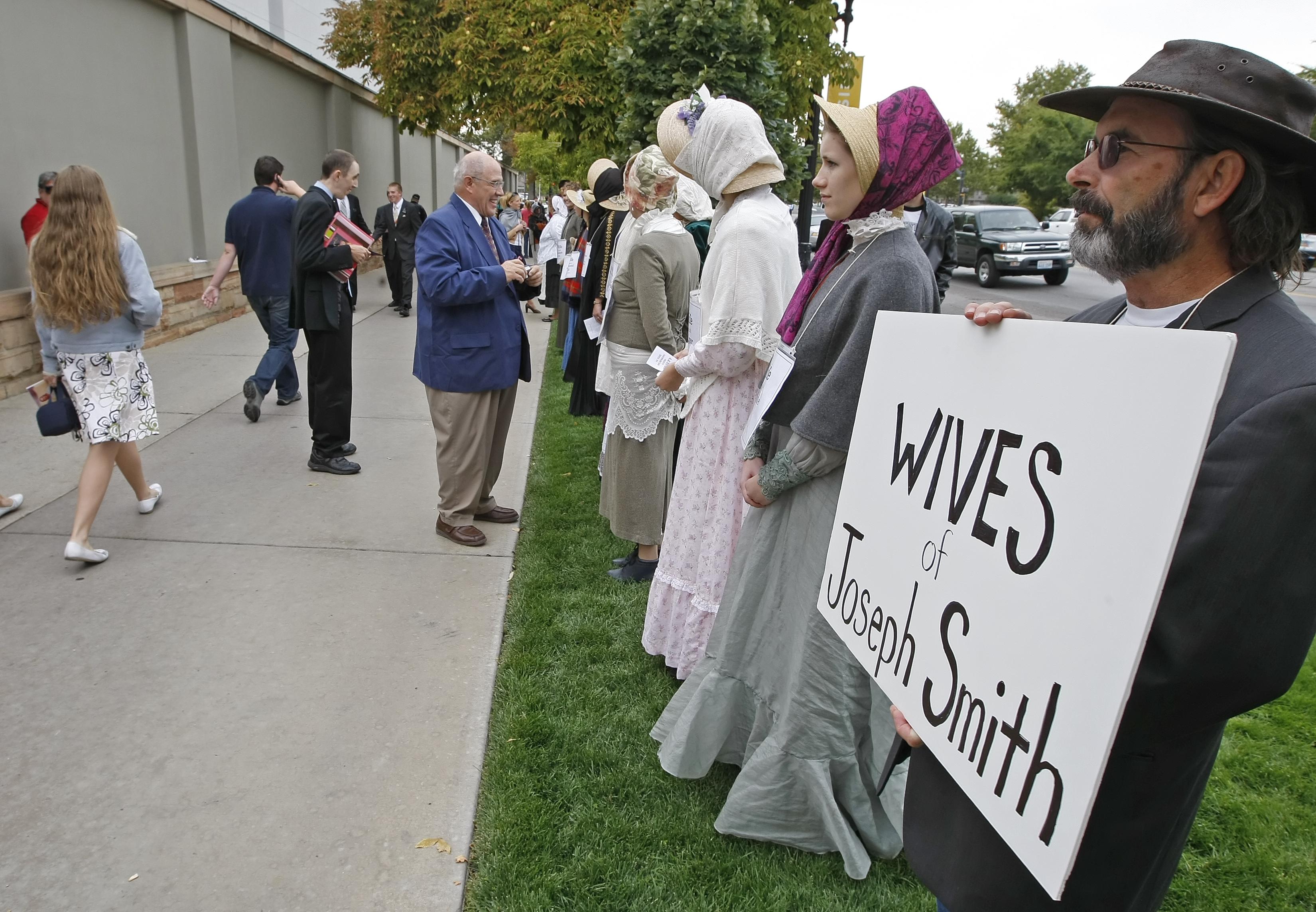On Monday, the New York Times reported that, for the first time ever, the Church of Jesus Christ of Latter-day Saints, commonly known as the Mormon church, acknowledged that its founder, Joseph Smith, was an avid polygamist who had up to 40 wives. This is not exactly news—even though the Times characterizes the disclosures as “bombshell” revelations, most outsiders, and plenty of insiders too, consider Smith’s polygamy common knowledge. Smith announced “the principle of plural marriage” a year before he was killed, and his successor, Brigham Young, was openly polygamous, as were many subsequent Mormon leaders. But the church’s public admission is still significant because previously the official church had been reluctant to engage the question of Smith’s own polygamy.
The history of what Mormons called “plural marriage” has always been the greatest obstacle for those in the faith seeking mainstream acceptance of their church. Up until now, Smith has always been portrayed in Mormon literature “as a loyal partner to his loving spouse Emma,” as Laurie Goodstein of the New York Times writes. The picture that accompanies Goodstein’s story—a statue of Smith gazing into the eyes of Emma, his first wife, that stands in the Temple Square in Salt Lake City—drives home how much the other 30-plus women in Smith’s life—including one who was just 14, and some who were still married to other men—have largely been ignored.
In that context, the lengthy essay posted at the Latter-day Saints website detailing Smith’s erratic history of coming up with varied reasons to marry more and more women feels surprisingly frank, particularly the details of how polygamy affected Emma, who married Smith before he had the revelation that God wanted him to be with all the ladies. “Plural marriage was difficult for all involved,” the essay reads. “For Joseph Smith’s wife Emma, it was an excruciating ordeal.” Indeed, quite a bit of emphasis is put on how confusing and miserable polygamy made many of its participants, including the men (though I remain skeptical that so many men would stick with the practice if it didn’t have some upsides).
The essay also addresses what we all really want to know, which is how much sex a guy with 40 or so wives had. In short, according to the essay, it’s not as much as you’d think. Many of Smith’s wives were married to him for “eternity only,” which church historians believe was more of an honorary designation than a full-blown sexual union. The historical website Joseph Smith’s Polygamy gets into more detail, arguing that “evidence supports sexual relations in less than half of Joseph Smith’s polygamous unions, and available documents indicate that such relations were infrequent.” One convincing data point: Smith only had two children, ever, with all those extra wives.
These essays are all part of the church’s recent push for greater transparency, a start at correcting its long and notorious habit of secretiveness. Church leaders sent a letter in September asking priesthood-holders to direct believers who have questions about church history to essays at the LDS website that address some of the more controversial issues of the church’s past. In addition, many of Smith’s papers that have long been hidden from public view are now on display in the Church History Library and available for viewing at the Joseph Smith Papers website.
So why is this happening now? There are several reasons for this new emphasis on transparency, but as Goodstein writes, the Web is a big one: “The church’s disclosures, in a series of essays online, are part of an effort to be transparent about its history at a time when church members are increasingly encountering disturbing claims about the faith on the Internet.” The transparency push is also occurring at a time when Mormon women are increasingly clamoring to have a larger place in a church that has traditionally reserved the most important leadership roles for men. The church has not exactly embraced this campaign—it’s been excommunicating women for being too outspokenly feminist, in fact. But for the first time ever, the church is allowing the twice-annual LDS General Women’s Meeting to be part of the church’s General Conference, a decision that has plenty of detractors. Perhaps that decision, plus this new transparency, suggests that the church is moving, in fits and starts, in the right direction.
